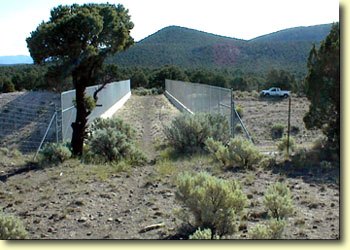What have our highways done to our deer herds?
By: Todd Sullivan
In Utah and other western states, deer-vehicle collisions (DVCs) occur most frequently in spring and fall when deer migrate to and from/or occupy winter ranges at the lower elevations throughout the state. Highways are being continually upgraded and expanded into deer habitat in order to accommodate increasing traffic demands and increased motor vehicles. Roads fragment the habitat and can make migration and dispersal of mule deer difficult. In fact, some mule deer populations may be adversely impacted by DVCs and road construction. Unfortunately, all too often, the issue of wildlife vehicle collisions is viewed as just an incidental taking of animals. In reality, DVCs are not just costly accidents; they are often lost hunting opportunities and lose of genetic diversity as well.
Deer-vehicle collisions have increased significantly in the United States since 1980 estimates indicate 1.5 million DVCs occur annually. More than 90% of deer involved in vehicle collisions die from their injuries. According to Terry Messmer, Extension Wildlife Specialist at Utah State University, approximately 10,000 DVCs occur in Utah each year even though state traffic accident records report, on average, only 2,200. Nationally, DVCs result in approximately 29,000 human injuries and 211 human fatalities annually. Estimated damage to vehicles exceeds $1.1 billion, with the average repair bill around $1,577 per vehicle. And, these figures will likely increase as vehicles become more costly to repair.
 |
A variety of techniques have been used to mitigate the impact highways have on wildlife and to reduce DVCs. These methods can be generally categorized as 1) highway fencing, 2) animal corridors (underpasses and overpasses), 3) deer behavior modification, and 4) motorist behavior modification. Unfortunately, few states conduct any scientific evaluation of these mitigation techniques to determine their true effectiveness.
For years, state wildlife agencies have promoted increasing healthy deer populations, while at the same time, departments of transportation have been building more highways. We have now reached a point where these activities have negative consequences on each other. The time has come for us all to recognize our responsibility in reducing DVCs. Where we go from here depends on our willingness to change our individual attitudes and behaviors. Communication is the first small step towards working together for the common goal of reducing DVCs.
 |
 |
You can also join conservation groups like the Mule Deer Foundation and develop projects that address the issue of DVCs. Keep records of those DVCs you come across so you are better able to prove there is a problem. Work with your local agencies to solve local problems. Get involved. Ultimately, the squeaky wheel will get the grease.
About the author: Todd Sullivan is currently a graduate student at Utah State University working on ways to reduce deer-vehicle collisions. His interests include private land and public wildlife issues, and pursuing trophy blacktail deer. Originally from northern California, Todd currently resides in Logan, Utah, with his wife and two daughters.
Click-a-Pic ... Details & Bigger Photos
Click-a-Pic ... Details & Bigger Photos
Videos | Hunts & Tags | About Mule Deer | About Elk
Classified Ads | Photo Tours | About this Site | Advertising |
Older Content | Email Us | Privacy Policy
